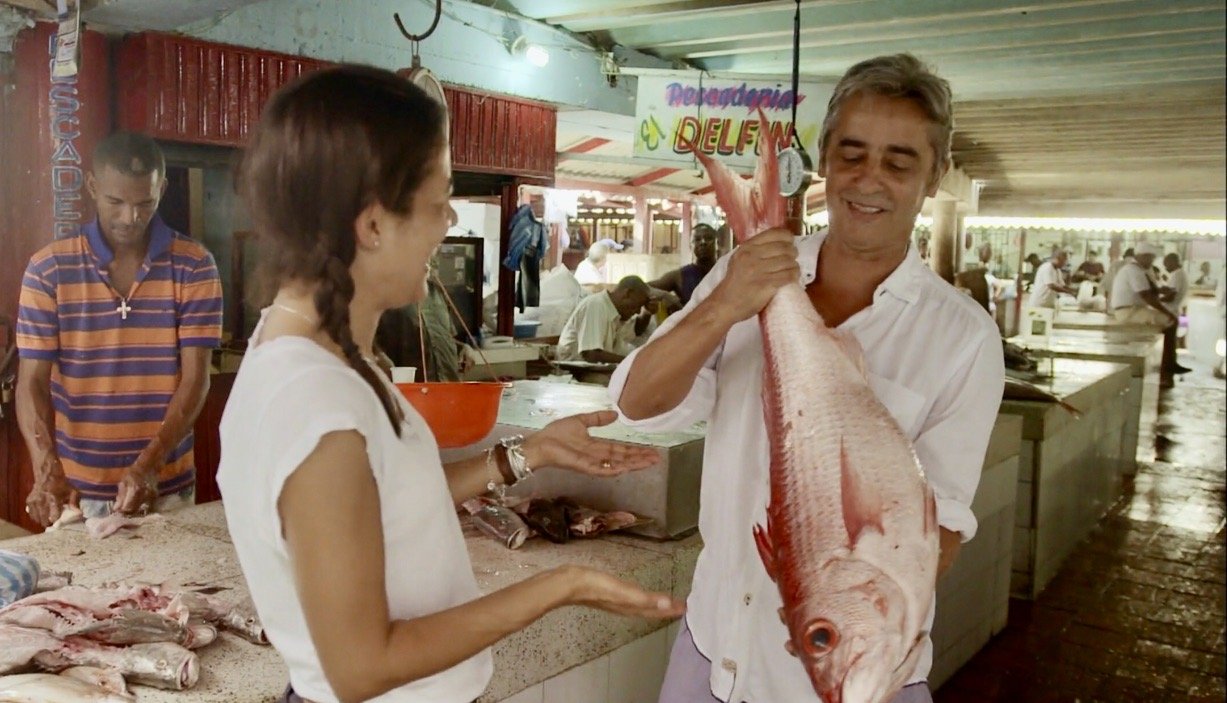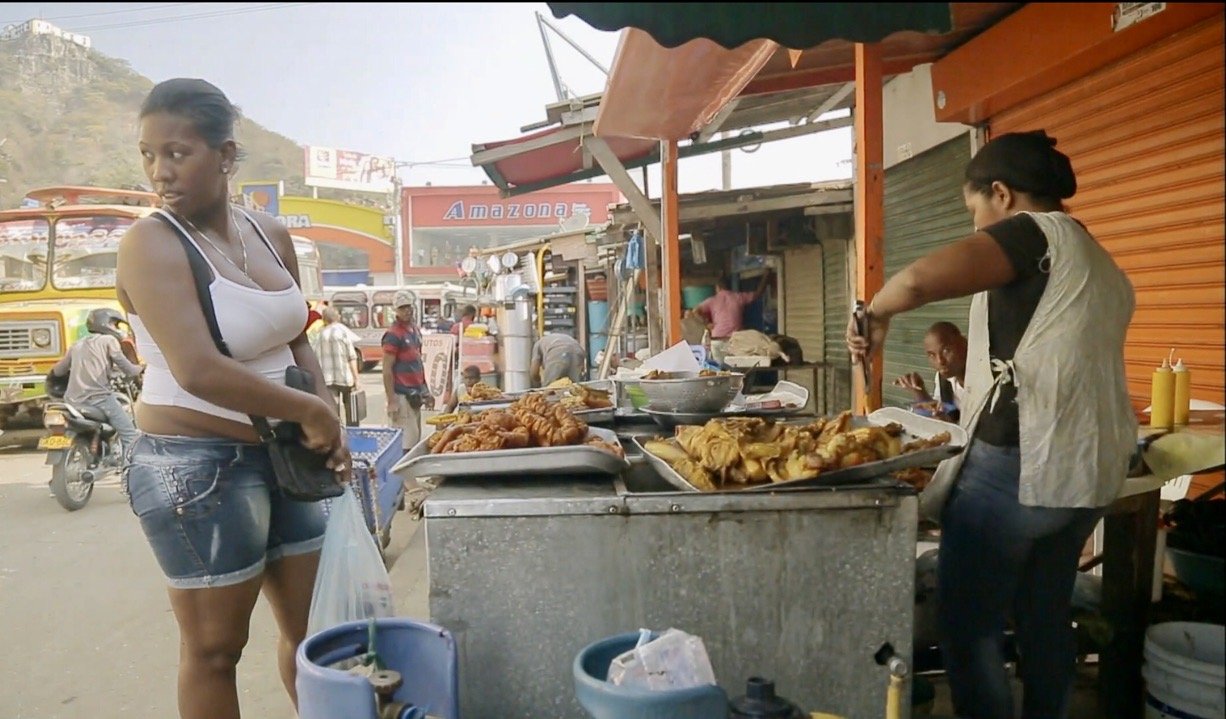Virtual Traveller: The Vibrant Streets of Cartagena, Colombia
I think I should perhaps rebrand my website The Virtual Traveller given that seems to be all I do these days. Thanks to the Knowledge Network, for the past two months I have been visiting Waterfront cities from around the world, however that will end Feb 27 when they will expire.
What I love about Waterfront cities is that they are not travelogues, as they take you not only to some of the tourist spots, but they also look at the economic and social issues of the city.
One of the lessons I learned from watching dozens of Waterfront documentaries is that “Calgarians just aren’t into their streets, like some cities.”
Women in colourful dress selling fruit in the streets of Cartagena are called Palenqueras. They have become the symbol of the city. Link: Palenqueras
Queen Of The Caribbean
Most recently I travelled virtually to Cartagena, Colombia that is often referred to as the “Queen of the Caribbean” with its superbly preserved historic city center and vibrant streets.
Cartagena’s Old Town with its cobble stone alleys, balconies covered in bougainvillea and massive churches and leafy plazas is a UNESCO World Heritage site. However, the Waterfront Cities documentary also looked at how the waterfront has evolved from fishing to container shipping, and the contrast between the rich and more neighbourhoods.
As I was watching I couldn’t help but snap some screen shots, just like I would if I was actually flaneuring the street of Cartagena. What impressed me most, was the contrast in the streets of the city from neighbourhood to neighbourhood and from night to day.
Hope you enjoy this virtual tour of Cartagena as much as I did watching it.
For those who like to eat like a local, there are cow’s eyes are available at the Mercado Bazurto (market) for making soup.
Colombians love their meat.
Colombians live, work and play in the streets.
Bocagrande is Cartagena’s new exclusive residential neighbourhood with modern hotels and amenities.
It is home to all the major hotels thanks to having to pay no taxes for 10 years. It is a popular vacation destination for Colombians.
The old town is famous for its wooden balconies and narrow streets.
Cartagena’s streets are full of vendors, some of which appeal to tourist, others offer everyday items for locals.
The San Francisco neighbourhood by the airport is one of the poorest in Cartagena, which is sometimes called the City of Contrasts as there is a huge difference in how people live. Waterfront City host Sophie Fouron wanders the streets with the director of the local Youth Centre who is helping the children learn English so they can get jobs in the tourist industry.
Sophie with the children from the Youth Centre.
The later it gets the busier the street get. The streets are animated until 4 am.
The streets of Cartagena’s old town are filled with music at night.
Waterfront cities have a huge advantage when it comes to tourism as they often have cruise ships which are essentially floating hotels. They can add 2,000+ hotel rooms over night, with tourists who nothing else to do but wander the street, eating, drinking, shopping and being merry.
Cartagena is a major international trading city, with 51 different ports.
Sophie Last Word
Sophie ended her visit to Cartagena by saying the cit’s 24/7 vitality has a “joie de vivre” like not other city she has visited. She loved how the people live on the streets and that their motto of “always walk slowly and in the shade.”
Cecila’s Last Word
Before posting this I sent it to Everyday Tourist reader Cecila Gossen who was born in Cartagena, moved to Canada in 1969 but still visits the city every year and was in Cartagena when I sent her the draft. Here comment to this blog was:
Colombia is a third world country and yes, the differences between the rich and poor and enormous. The City mostly lives off tourism so there are lots of hotels, everything from five-star international chains to local ‘hang your hammock’ local places.
Colombia has been receiving hundreds of thousands of refugees from Venezuela for the past 20 years or so. Think of a poor country providing basics not only for its citizens but for all those refugees who arrive with nothing. In some of the local plazas you can see make-shift dental chairs receiving patients. These are Venezuelan dentists trying to earn their daily bread. I am not exaggerating. I talked to a local gardener who turned out to be a former university professor of agriculture in Venezuela.
But, leaving all that aside:
If you were to come to Cartagena (recommended), the best thing to do is to spend time in the various plazas in the old city where life happens. There are restaurants, street entertainment, pop-up stores selling souvenirs and clothing, juice stands, etc. The various districts of the city all have their own charm. I would recommend Getsemani, a working class district that has become a hub for artists and musicians who ply their wares on the streets. This area is very bohemian and gay friendly. This is also an area of little restaurants and boutique hotels housed in centuries old buildings and houses.
San Diego is another lovely area, also in the old city. The local plaza has everything from a five star hotel to the Fine Arts school, restaurants and street entertainement.
My Last Word
After watching dozens the Waterfront Cities documentaries, I can see why people have a hard time understanding and appreciating Calgary’s sense of place. We don’t have an old town at best we have two old streets – Stephen Avenue downtown and 9th Ave SE in Inglewood. We don’t have an outdoor central market that is the city’s gathering place. And we don’t have the outdoor street live that is traditionally associated with great cities, especially tourist cities.
Instead of shopping on the street we shop indoor malls, our year-round farmers’ markets are indoors for the most part. In downtown, we shop along our indoor +15 walkways and meet up with friends at their indoor food halls aka food courts and cafes. While we love our parks and river in the summer, in the winter we flock to our mega indoor recreation centre. When it comes to shopping, we do it mostly at indoor malls. And we prefer walking to our car, rather than walking to the closest transit stop and waiting outside for the bus or train to come. And unlike European, Latin America, South American and Asian cities most Calgarians live in large single-family homes that provide us with lots of indoor space for hanging out or entertaining others, making the street less attractive as the preferred place to visit with family and friend.
In fact, you could say Calgary is an indoor city, which is perhaps not surprising given our cold winters and cool summer nights.
If you like this blog, you will like these links:
NYTimes: How to pretend you’re in Cartagena Today



































